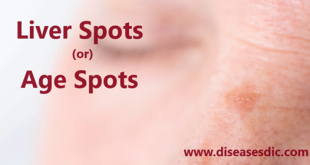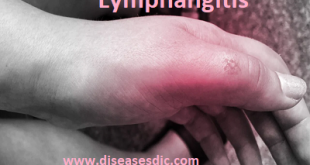Definition
Livedo reticularis (LR) is a common vascular reaction pattern characterized by a reticular (net-like) discoloration on the extremities and trunk. It is caused by decreased blood flow to the skin or impaired outflow in the dermal venous plexus and stagnation of the blood within these vessels. The darker, discolored areas represent the accumulation of deoxygenated blood. Etiologic categories include vasospasm, vessel wall dysfunction (e.g., vasculitis), and vascular flow compromise as in coagulopathies.
LR is exacerbated by cold temperatures. It may be physiologic (cutis marmorata), a primary disease (as in idiopathic cases), or it may be secondary to underlying disorders such as antiphospholipid antibody syndrome, vasculopathy, or autoimmune connective tissue disorders. Amantadine, quinidine, and catecholamines have also been described as triggers. Drugs used in the past to treat syphilis (bismuth and arsphenamine) also caused LR. Furthermore, infections can induce LR via the formation of cryoglobulins, cold agglutinins, septic emboli, immune vasculitis, or septic vasculitis. In adults, LR is frequently seen in patients with the Raynaud phenomenon, in those with a predisposition to chilblains and acrocyanosis, and in patients with poor vascular flow (eg, peripheral vascular disease and cardiac failure).
These secondary forms may also present with livedo racemosa, where the reticular pattern is asymmetric, discontinuous, and localized. Localized forms may be associated with vasculitis. In severe cases, the extremities are cold and ulcers may form. Sneddon syndrome is extensive diffuse LR or livedo racemosa with cerebrovascular disease (from transient ischemic attacks to frank cerebrovascular accidents), hypertension, and antiphospholipid antibodies.
Types of Livedo reticularis
Based on the duration of the livedo, called the violet discoloration pattern, and the temperature, the livedo reticularis is divided into four types. The four types of LR are physiologic livedo reticularis, primary livedo reticularis, Idiopathic livedo reticularis, Amantadine induced livedo reticularis.
Physiologic Livedo Reticularis: also known as cutis marmorata. This type of livedo reticularis occurs due to exposure to cold temperatures; blood supply is disturbed by the excess cold temperature resulting in cyanotic discoloration of the skin. The symptoms will get resolved with an increase in temperature. Young women are mostly affected by physiologic livedo reticularis. The most commonly affected area is the leg.
Primary Livedo Reticularis: It is a benign form of LR with discoloration of the skin with unknown cause. Idiopathic livedo reticularis is the early stage of Sneddon syndrome, antiphospholipid syndrome, or APS. Amantadine-induced livedo reticularis: livedo reticularis is caused by amantadine. The catecholamines provoke arteriolar vasospasm.
Other varieties of include:
Cutis Marmorata Telangiectatica Congenita or CMTC: It is the congenital form of livedo reticularis. Features are persistent.
Livedo Racemosa: It is a persistent and generalized variety of livedo reticularis.
Secondary Livedo Reticularis: Livedo reticularis is caused due to underlying systemic diseases.
Epidemiology
LRC is the most common dermatologic presentation in patients with antiphospholipid syndrome (APS), presenting in 25% of patients with primary APS and in 70% of patients with SLE-associated APS.
Causes of Livedo reticularis
Generally, it arises from altered blood flow in the skin microcirculation (the small blood vessels that supply the skin). A variety of factors reduce the flow of fresh arterial blood to the skin. This leads to the collection of venous blood and gives rise to the typical purplish color.
Cold weather can induce the arteriolar walls to spasm. However, in physiologic livedo reticularis, the pattern tends to disappear when the affected area is warmed.
Other causes include reduced blood flow due to hyperviscosity (thickened consistency of the blood), vessel wall pathology (e.g., from blood vessel inflammation), or obstruction (e.g., from a blood clot inside the vessel).
Symptoms
Common symptoms are:
- Reddish-blue to purple discoloration of the skin, which is also blotchy in appearance.
- The discoloration of Livedo Reticularis has a lace or net-like pattern.
- It can be persistent or transient.
- Legs are commonly affected by Livedo Reticularis.
- It can be more pronounced in cold weather.
- Patients can also have numbness and tingling of the affected skin when it has occurred as a result of exposure to cold.
- It may or may not improve with warming.
- In cutis marmorata, the patient has more diffuse and mild mottling without any other symptoms. It is seen often on the legs and slowly subsides with re-warming.
- Cutis marmorata telangiectatica congenita is more distinct when compared to cutis marmorata.
- Livedo Racemosa commonly affects the trunk, legs, and buttocks and the lace-like discoloration consists of broken, irregular macules which have an annular pattern.
- Primary livedo reticularis is intermittent in adults and the color changes of the skin are not that influenced by temperature.
Symptoms of LR
Complications
LR itself is relatively benign. However, thromboembolic disease due to associated conditions such as antiphospholipid syndrome may lead to serious arterial events, including the death of the patient.
Livedo reticularis risk factors
LR is harmless. But some conditions can cause it to happen more often. Some conditions that make livedo reticularis more likely include:
- Lange syndrome
- Trisomy 18
- Down syndrome
- Congenital hypothyroidism
- Lupus erythematosus
- Peripheral vascular disease
These conditions often affect your nervous and vascular systems. This might be why they’re connected to cutis marmorata. Your nervous system might be less prepared to react to the cold. This causes your skin to marble.
Treatment
The best therapy for you depends on the type:
- Primary livedo reticularis: Gradually warm the affected area by taking a shower or bath.
- Secondary livedo reticularis: Symptoms should improve by treating the underlying condition. For example, a vascular condition may require anticoagulants.
- Congenital livedo reticularis: This condition goes away on its own but may take time.
- Erythema ab igne: Moving away from the heat source is typically all that’s necessary. For lingering symptoms, you may need medicated cream, such as fluorouracil.
- Idiopathic livedo reticularis: Elevating the affected limb or wearing compression garments can improve blood flow.
Diagnosis
Given the characteristic appearance of this disorder and the typical circumstances in which it arises, the diagnosis of LR is typically simple. Most of the cases, LR is a common occurrence, requiring no further examination.
LR Differential Diagnosis
If the circumstances surrounding the skin coloring or how it appears to suggest a pathological origin, the diagnosis may become difficult. In these situations, the doctor will start by taking a thorough medical history and physical examination.
Targeted diagnostic testing may be done to look for the suspected underlying condition.
If the initial evaluation does not point in a particular direction, the doctor may also order:
- Screening blood tests, such as a complete blood count and a metabolic panel
- Blood tests that screen for cold agglutinins, anti phospholipids, cryoglobulins, cryofibrinogens, autoimmune disease, and coagulation disorders
- A computerized tomography (CT) scan or magnetic resonance imaging (MRI) scan, if cancer is suspected
- A skin biopsy
Prevention of Livedo reticularis
Mottled skin can vary in its ability to be prevented depending on what is causing it. However, adopting measures to stay warm and increase blood flow may be beneficial if someone has cutis marmorata or another condition that affects body temperature or circulation.
Anybody can try:
- Staying active: Regular exercise can help improve circulation. Avoid sitting or lying down for long periods, wherever possible. If this is unavoidable, take regular breaks to stretch and move around. People with limited mobility may find it helpful to elevate their feet.
- Keeping warm: Wearing multiple, light layers of clothing is a more effective way to stay warm than wearing just one thick layer. A blanket may help keep the legs and feet warm when sitting. Putting on gloves before going outside in cold weather traps warm air.
- Reducing pressure on the extremities: Try to avoid putting weight on the arms or legs for long periods. For example, if someone often sits with their legs crossed, they could try uncrossing them to allow blood to flow more easily. Wearing tight clothing may also reduce blood flow, so aim for clothes that fit but do not dig in.
- Massage: Massage can help stimulate circulation. A person can visit a professional for this or learn self-massage techniques.
- Maintaining hydration: Making sure a person drinks enough water can help support healthy blood flow.
- Stress reduction: When a person experiences stress, it can cause the blood vessels to narrow and restrict blood flow. Therefore, managing a person’s stress is a good prevention strategy.
- Quitting smoking: Smoking can also cause blood vessels to narrow, so a person should avoid it as well.
 Diseases Treatments Dictionary This is complete solution to read all diseases treatments Which covers Prevention, Causes, Symptoms, Medical Terms, Drugs, Prescription, Natural Remedies with cures and Treatments. Most of the common diseases were listed in names, split with categories.
Diseases Treatments Dictionary This is complete solution to read all diseases treatments Which covers Prevention, Causes, Symptoms, Medical Terms, Drugs, Prescription, Natural Remedies with cures and Treatments. Most of the common diseases were listed in names, split with categories.







